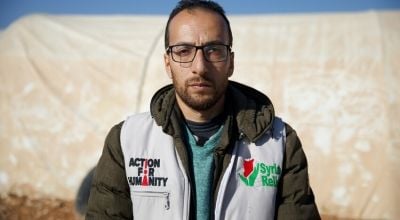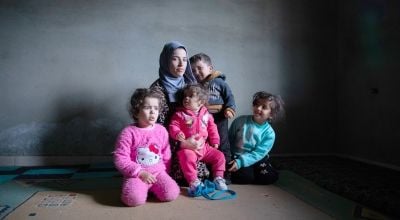
Read our 2023 annual report

Knowledge Hub
The Syria crisis explained: 5 things to know in 2024

Thirteen years into the humanitarian crisis in Syria, here’s what you need to know.
Since early 2011, a humanitarian crisis in Syria has caused enormous suffering for millions of people. Protracted conflict has led to destroyed infrastructure, lost education, vulnerability to natural disasters and disease, and mass displacement. Over 60% of the estimated pre-war population of Syria (13.7 million) have been displaced, and, at the beginning of 2024, the country represents the world’s largest refugee crisis and largest internal displacement crisis. According to the UN’s most recent Humanitarian Needs Overview, 15.3 million people need humanitarian assistance.
The more conflict continues, the more complex this crisis becomes. The situation became even more dire at the beginning of 2023 when a 7.8-magnitude earthquake hit parts of Syria and neighbouring Türkiye—the worst natural disaster in a century to affect the region. Here’s what you need to know about the crisis in Syria in 2024.
1. Civilians are bearing the brunt of the conflict — in Syria and abroad
Of a total population of 21 million, 16.7 million Syrians require humanitarian assistance. When you include the number of Syrian refugees living in the region, the total need for humanitarian assistance increases to over 27 million.
Available resources in Syria have continued to diminish, along with the ability of enjoying a safe and decent livelihood. Over 80% of Syrians now live below the international poverty line. Prior to 2011, this figure was as low as 10%.
Many civilians who have spoken with Concern over the last 10 years of our work in both the country and neighbouring communities (Türkiye, Lebanon, and Iraq) have described the ways that conflict has seeped into every aspect of their lives. Violence has destroyed cities like Idlib, Aleppo, and Raqqa. Yet many Syrians, regardless of where they are now, have told us that they don’t feel safe or secure in any environment. Personal security is an alien feeling, especially for Syrian women and girls.
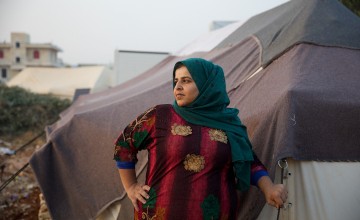
2. Displaced Syrians face challenges both psychological and existential
After 13 years of conflict, families in Syria have been forced, often multiple times, to flee to safety. Some have reported being displaced as many as nine times or more in just the first decade of the crisis. Whether moving within the country or abroad, each of these rounds of displacement brings new trauma and psychological burden.
Once people are forced to leave their homes (and the social structure and nourishing environments of their home and community), they become extremely vulnerable. Food, water, healthcare, and other essentials are harder to come by, particularly in displacement camps and informal settlements where infrastructure is haphazard at best and safety and dignity are rare commodities.
Over the years of conflict affecting different areas of the countries, millions of Syrians (usually women and children) have often fled with bare essentials. For many, necessary documents and IDs get lost in the shuffle which makes it harder to move within the country due to roadblocks and checkpoints — not to mention outside of the country.

3. Conflict at home and abroad has led to an even more dire economic crisis
The financial situation in Syria had been deteriorating steadily since the start of the crisis. However, the pandemic led to an even sharper economic decline and depreciation of the Syrian pound. In October 2020, the average food basket cost 236% more than it did in 2019. By 2022, the World Food Programme estimated that 12.4 million Syrians were food insecure, a dramatic increase compared to the previous year, and one linked to the worsening economic situation.
Things haven’t improved since 2020. Energy and food prices both rose sharply due to the conflict in Ukraine, with some economists predicting that the country would soon reach a state of hyperinflation. As of 2023, inflation rates in the country were at 90%. Essential goods and resources have become harder to afford for the most vulnerable Syrians, many of whom are unable to earn a steady income or keep up with the current rates of inflation, creating a vicious cycle. UNOCHA estimates that 85% of families in Syria are unable to meet basic needs.
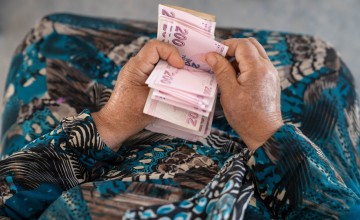
4. Syrian women and children are especially vulnerable
As we mentioned above, the war in Syria affects different people in different ways, ways that often reinforce existing gender inequalities. Throughout the conflict, many Syrian women have faced challenges after becoming the heads of their households and struggling to survive and support their families.
Gender-based violence (GBV), domestic violence, sexual harassment, and sexual violence have increased across the country, with many women reporting that their husbands are quicker to resort to violence as the external conflict takes an increasing psychosocial toll within the home. The conflict has led to a vast amount of single female-headed households without a primary breadwinner.
Negative coping mechanisms have increased as a result of depleted resources and eroded social cohesion. Women and children are disproportionately affected by this, with rising levels of girls’ early marriage, youth recruitment into armed groups, and child labour with both boys and girls entering the workforce to help their families survive. The psychological effects are dire as well, with UNOCHA reporting that more than 25% of children in Syria show some signs of psychological distress.
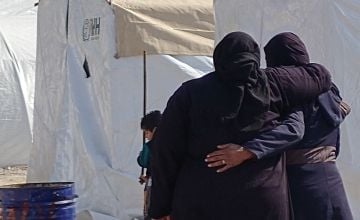
5. We’re now running the risk of multiple “lost generations”
The conflict in Syria has directly affected children’s access to education. A March 2019 report by UNICEF suggests that 40% of Syria’s school infrastructure was destroyed in the conflict, creating huge gaps in the provision of education, and adverse protection risks. Before the conflict, Syria had a high attendance rate for primary education at 97%. As of 2023, nearly 2.5 million Syrian children are out of school.
After 13 years, the bigger problem is that many Syrians who didn’t finish their education are now having children who are likewise facing the threat of a lost or low-quality education. In a 2019 version of this explainer, we wrote that the longer the conflict continues the greater the risk there is for an entire generation of young Syrians becoming “lost” due to a lack of access to safe, quality education. We’re now facing the threat that multiple generations could face the same loss.
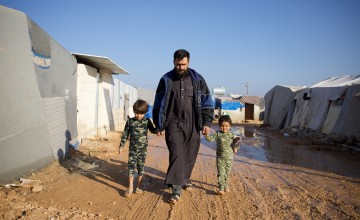
Concern in Syria
Concern Worldwide has been responding to the crisis in Syria since 2013. Last year, our programmes in the country’s northeastern region reached almost 290,000 extremely vulnerable people with food vouchers, temporary employment, and small business grants (as well as other interventions). We also addressed problems of access to safe, affordable, and reliable supplies of water by rehabilitating six water stations and eight water networks—which support a total of 204,000 people. Similar water rehabilitation in northern Iraq last year reached nearly 117,000 people.
Additionally in 2023, Concern responded within hours to the February 6 earthquake that devastated parts of Syria and Türkiye, distributing emergency supplies and providing psychosocial support. One year later, we continue to work with these communities in northwestern Syria on the long-term recovery efforts.
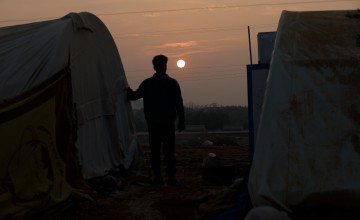
Outside of Syria, our work in Türkiye, Lebanon, and Iraq is focused on working with both Syrians and locals in host communities. In Lebanon, which hosts the largest number of refugees in the world by capita, we’ve responded to the country’s worst socio-economic crisis in decades. Part of this response includes a two-year livelihoods programme aimed to increase employment and income-generating opportunities for the most vulnerable households. Recently completed, the programme enrolled over 2,000 people.



